Ask Ethan: If Einstein Is Right And E = mc², Where Does Mass Get Its Energy From?

It isn’t just that mass and energy are equivalent and interchangeable. It tells us something fundamental about mass itself.
Of all the equations that we use to describe the Universe, perhaps the most famous one, E = mc², is also the most profound. First discovered by Einstein more than 100 years ago, it teaches us a number of important things. We can transform mass into pure energy, such as through nuclear fission, nuclear fusion, or matter-antimatter annihilation. We can create particles (and antiparticles) out of nothing more than pure energy. And, perhaps most interestingly, it tells us that any object with mass, no matter how much we cool it, slow it down, or isolate it from everything else, will always have an amount of inherent energy to it that we can never get rid of. But where does that energy come from? That’s what Rene Berger wants to know, asking:
My question is, in the equation E = mc², where does the energy in the “m” come from?
Let’s dive inside matter on the smallest scales to find out.
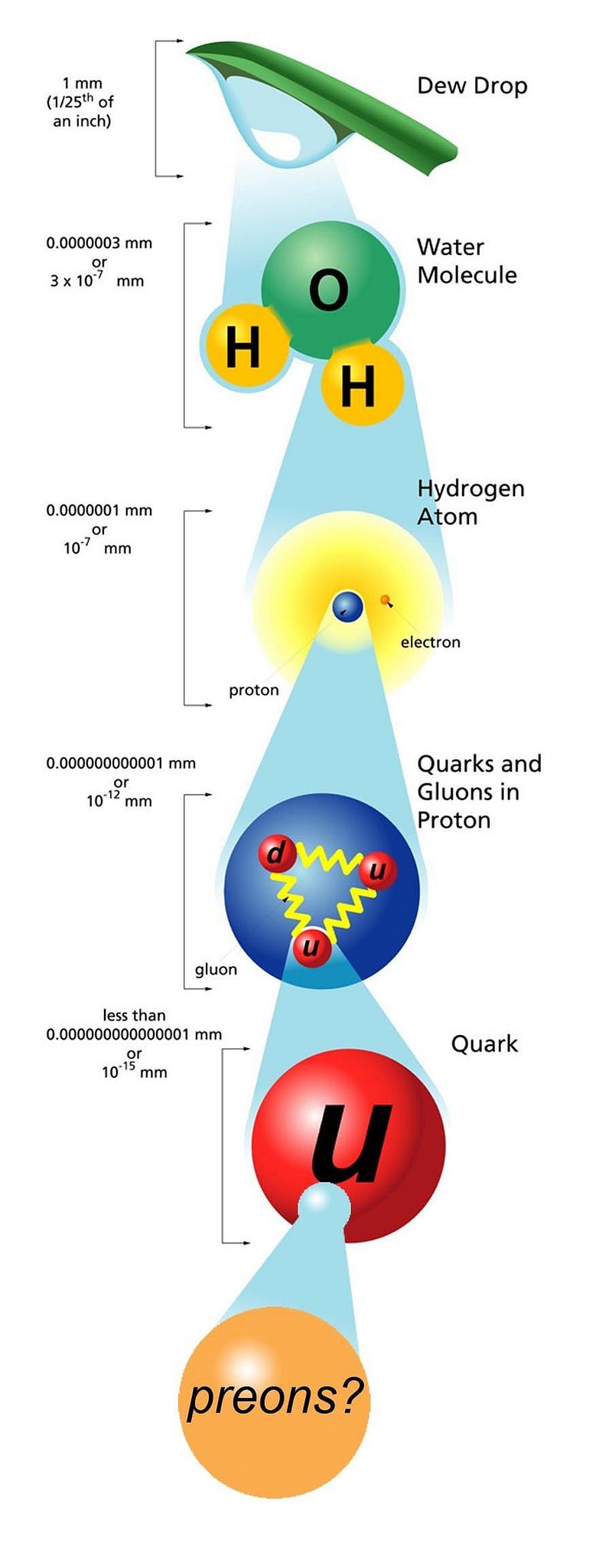
The first thing we need to do is to understand the equation E = mc², and that means breaking down each of the terms inside of it.
- E stands for energy: in this case, the total amount of energy contained in the particle (or set of particles) we’re looking at.
- m stands for mass: the total rest mass of the particle(s) we’re considering, where “rest mass” means the mass of the particle not in motion, and not bound to any other particles through any of the known forces (gravitation, the nuclear forces, or the electromagnetic force).
- c² is the speed of light squared: in this case, just a conversion factor, which tells us how to convert mass (which we measure in kilograms) to energy (which we measure in joules).
The reason that we can get so much energy out of a nuclear reaction comes about directly from this equation, E = mc².
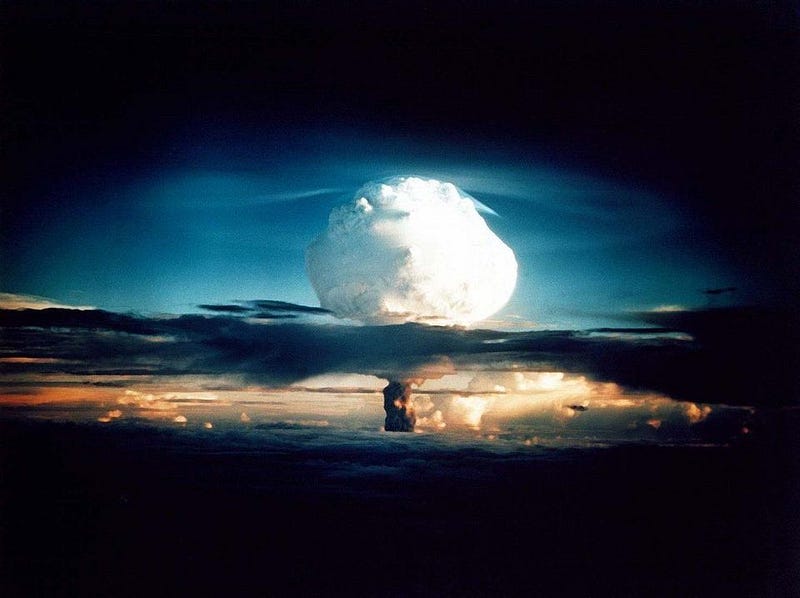
Even if we were to convert just a single kilogram (1 kg) of mass into energy, the fact that c² [which is (299,792,458 m/s)²] necessarily means that we’d get the equivalent of 21.5 megatons of TNT of energy out of that conversion. This explains why the Sun outputs so much energy; why nuclear reactors are so efficient; why the dream of controlled nuclear fusion is the “holy grail” of energy; and why nuclear bombs are both so powerful and so dangerous.
But there’s a happier side to E = mc², too. It means that there exists a form of energy that cannot be taken away from a particle no matter what you do to it. So long as it remains in existence, this form of energy will always remain with it. That’s fascinating for a number of reasons, but perhaps the most interesting one is that all other forms of energy really can be removed.
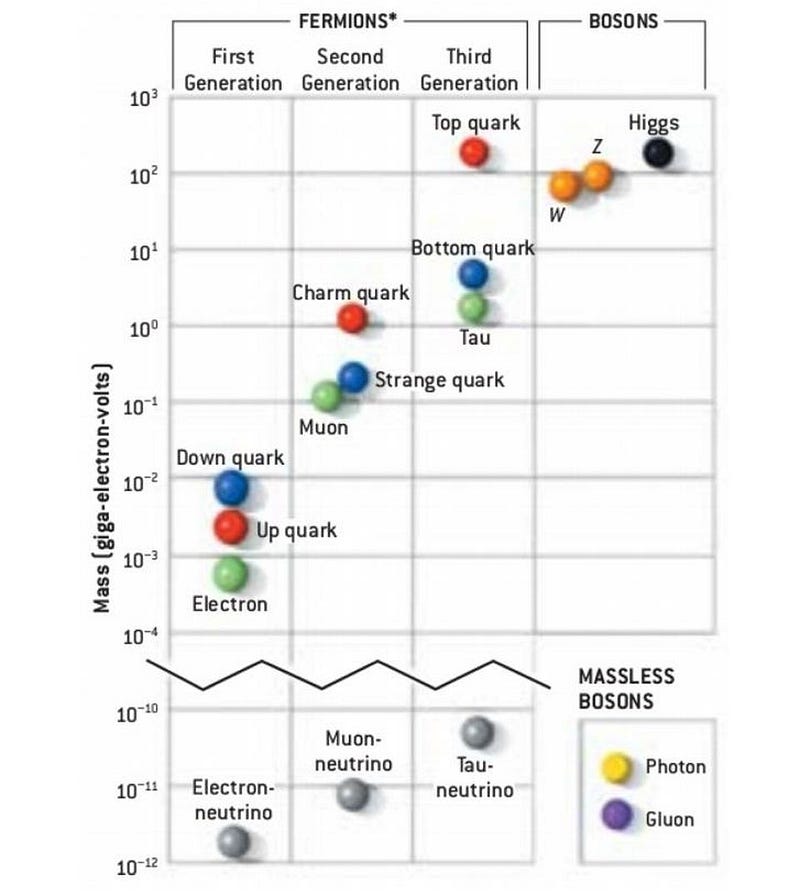
For example, a particle in motion has kinetic energy: the energy associated with its motion through the Universe. When a fast-moving, massive object collides with another object, it will impart both energy and momentum to it as a result of the collision, regardless of what else occurs. This form of energy exists on top of the rest mass energy of the particle; it is a form of energy intrinsic to the particle’s motion.
But that’s a form of energy that can be removed without changing the nature of the particle itself. Simply by boosting yourself so that you move with the same exact velocity (magnitude and direction) as the particle you’re watching, you can decrease the total energy of that particle, but only down to a certain minimum. Even if you remove all of its kinetic energy, its rest mass energy, the part defined by E = mc², will continue to remain unaltered.
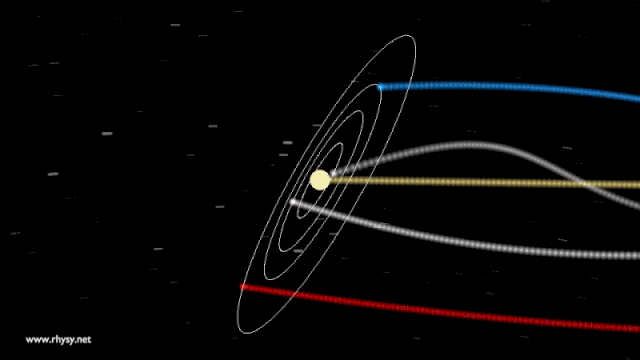
You might think that this means you can remove every form of energy other than rest mass energy, then, for any system at all. All the other forms of energy you can think of — potential energy, binding energy, chemical energy, etc. — are separate from rest mass, it’s true. Under the right conditions, these forms of energy can be taken away, leaving only the bare, unmoving, isolated particles behind. At that point, the only energy they’d have is their rest mass energy: E = mc².
So where does rest mass, the m in E = mc², come from? You might be quick to answer “the Higgs,” which is partially correct. Back in the early stages in the Universe, less than 1 second after the Big Bang, the electroweak symmetry that unified the electromagnetic force with the weak nuclear force was restored, behaving as one single force. When the Universe expanded and cooled enough, that symmetry broke, and the consequences for the particles of the Standard Model were tremendous.
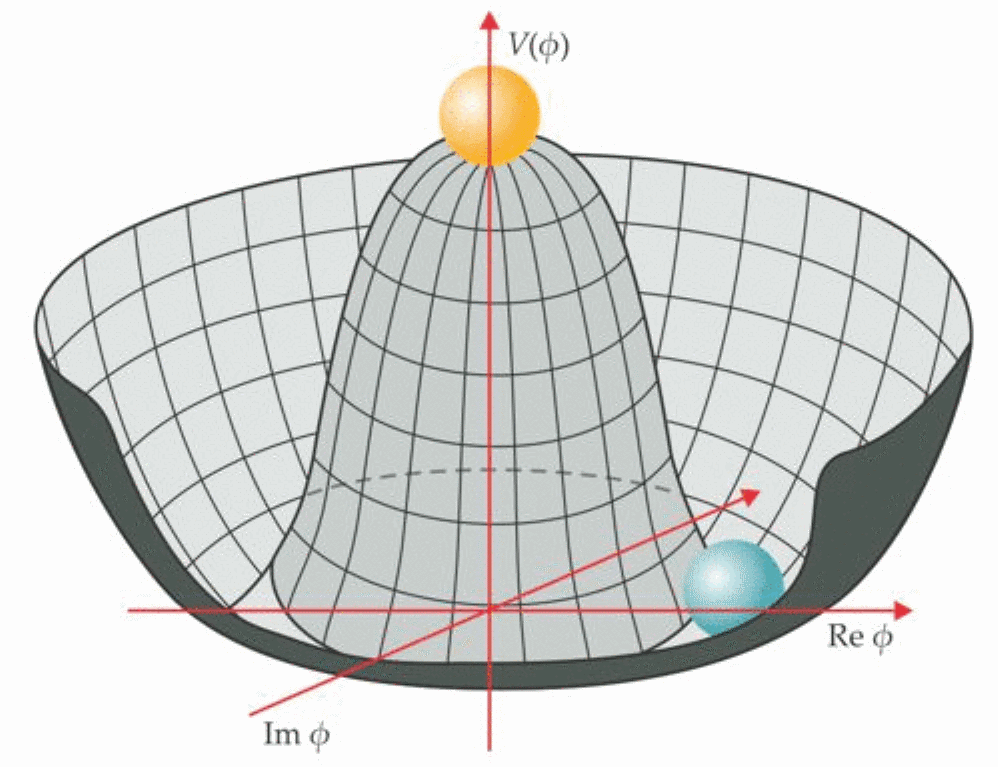
For one, many of the particles — including all of the quarks and charged leptons — acquired a non-zero rest mass. Because of the coupling of each of these quanta of energy to the Higgs field, a quantum field that permeates the Universe, many particles now have a non-zero rest mass. This is a partial answer to where the energy in the m for these particles comes from: from their coupling to a fundamental quantum field.
But it’s not always quite as simple as that. If you take the mass of an electron and try to explain it based on the electron’s coupling to the Higgs, you’ll be 100% successful: the contribution of the Higgs to the electron’s mass gives you exactly the electron’s mass. But if you try to explain the mass of the proton with this, by adding up the rest masses of the quarks and gluons that make it up, you’ll come up short. Way short, in fact: instead of getting the actual value of 938 MeV/c², you’ll get just ~1% of the way there.
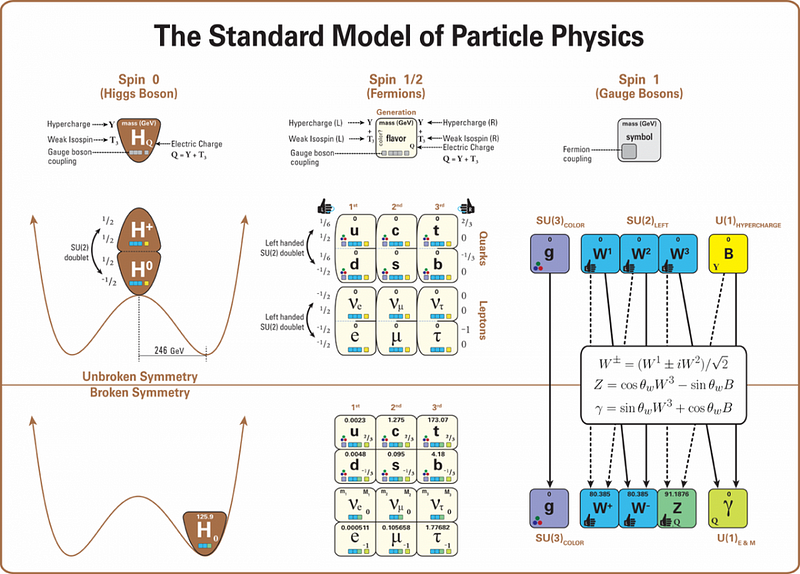
Since protons (and other, related atomic nuclei) are all made of quarks and gluons, and compose the majority of the mass of the normal (known) matter in the Universe, there must be another contributor. In the case of protons, the culprit is the strong nuclear force. Unlike the gravitational and electromagnetic forces, the strong nuclear force — based on quantum chromodynamics and the “color” property of quarks and gluons — actually gets stronger the farther away two quarks get.
Made up of three quarks apiece, each nucleon in an atomic nucleus is held together by gluons exchanged between these quarks: a spring-like force that gets stronger the farther apart the quarks get. The reason that protons have a finite size, despite being made of point-like particles, is because of the strength of this force and the charges-and-couplings of the particles inside the atomic nucleus.
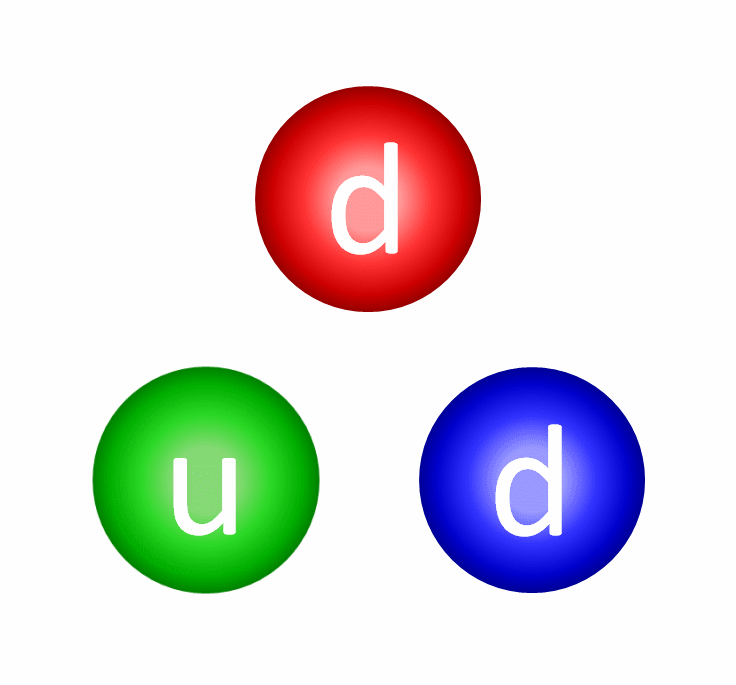
If the quarks could somehow be freed, most of the mass in the Universe would be converted back into energy; E = mc² is a reversible reaction. At ultra-high energies, such as in the very early Universe or in heavy ion colliders like RHIC or at the LHC, these conditions have been achieved, creating a quark-gluon plasma. Once the temperatures, energies and densities drop to low enough values, however, the quarks become re-confined, and that’s where the majority of normal matter’s mass comes from.
In other words, it’s far less energetically favorable to have three free quarks — even with the non-zero rest massive given to them by the Higgs — than it is to have those quarks bound together into composite particles like protons and neutrons. The majority of the energy (E) responsible for the known masses (m) in our Universe comes from the strong force, and the binding energy introduced by the quantum rules governing particles with a color-charge.
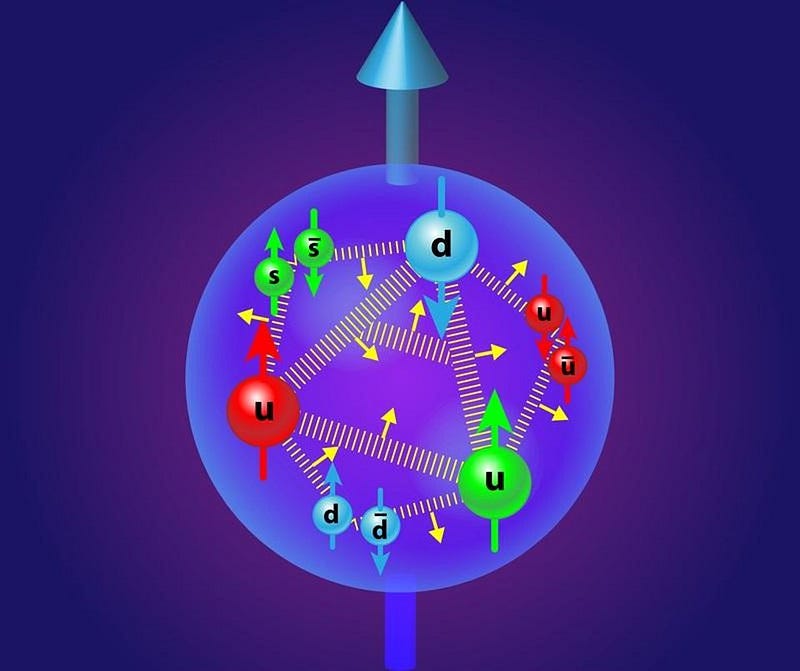
What we all learned a long time ago is still true: energy can always be converted from one form to another. But this occurs only at a cost: the cost of pumping enough energy into a system in order to eliminate that additional form of energy. For kinetic energy example earlier, that meant boosting either your speed (as the observer) or the particle’s speed (relative to you, the observer) until they match, both of which require the input of energy.
For other forms of energy, it can be more complex. Neutral atoms are ~0.0001% less massive than ionized atoms, as the electromagnetic binding of electrons to atomic nuclei gives off about ~10 eV of energy apiece. Gravitational potential energy, resulting from the deformation of space due to a mass, also plays a role. Even planet Earth, as a whole, is about 0.00000004% less massive than the atoms that make it up, as the gravitational potential energy of our world totals up to 2 × 10³² J of energy.
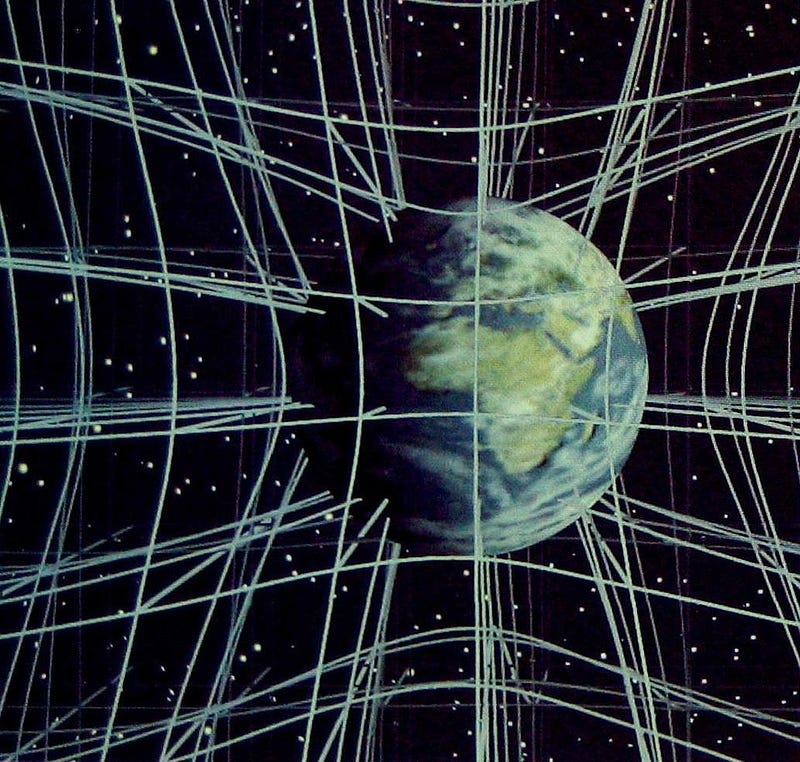
When it comes to Einstein’s most famous equation, E = mc² tells us that everything with mass has a fundamental amount of energy inherent to it that cannot be removed by any means. Only by destroying the object entirely — either by colliding it with antimatter (causing the release of energy) or pumping enough energy into it (for composite particles only, leaving its fundamental constituents intact) — can we convert that mass back into energy of some form.
For the fundamental particles of the Standard Model, the Higgs field and its coupling to each of those particles provides the energy that makes up the mass, m. But for the majority of the known mass in the Universe, protons, neutrons, and other atomic nuclei, it’s the binding energy that arises from the strong force that gives us most of our mass, m. For dark matter? Nobody yet knows, but it could be the Higgs, some form of binding energy, or something else entirely novel. Whatever the cause, however, something is providing the energy for this unseen mass. E = mc² is sure to remain true.
Send in your Ask Ethan questions to startswithabang at gmail dot com!
Ethan Siegel is the author of Beyond the Galaxy and Treknology. You can pre-order his third book, currently in development: the Encyclopaedia Cosmologica.




